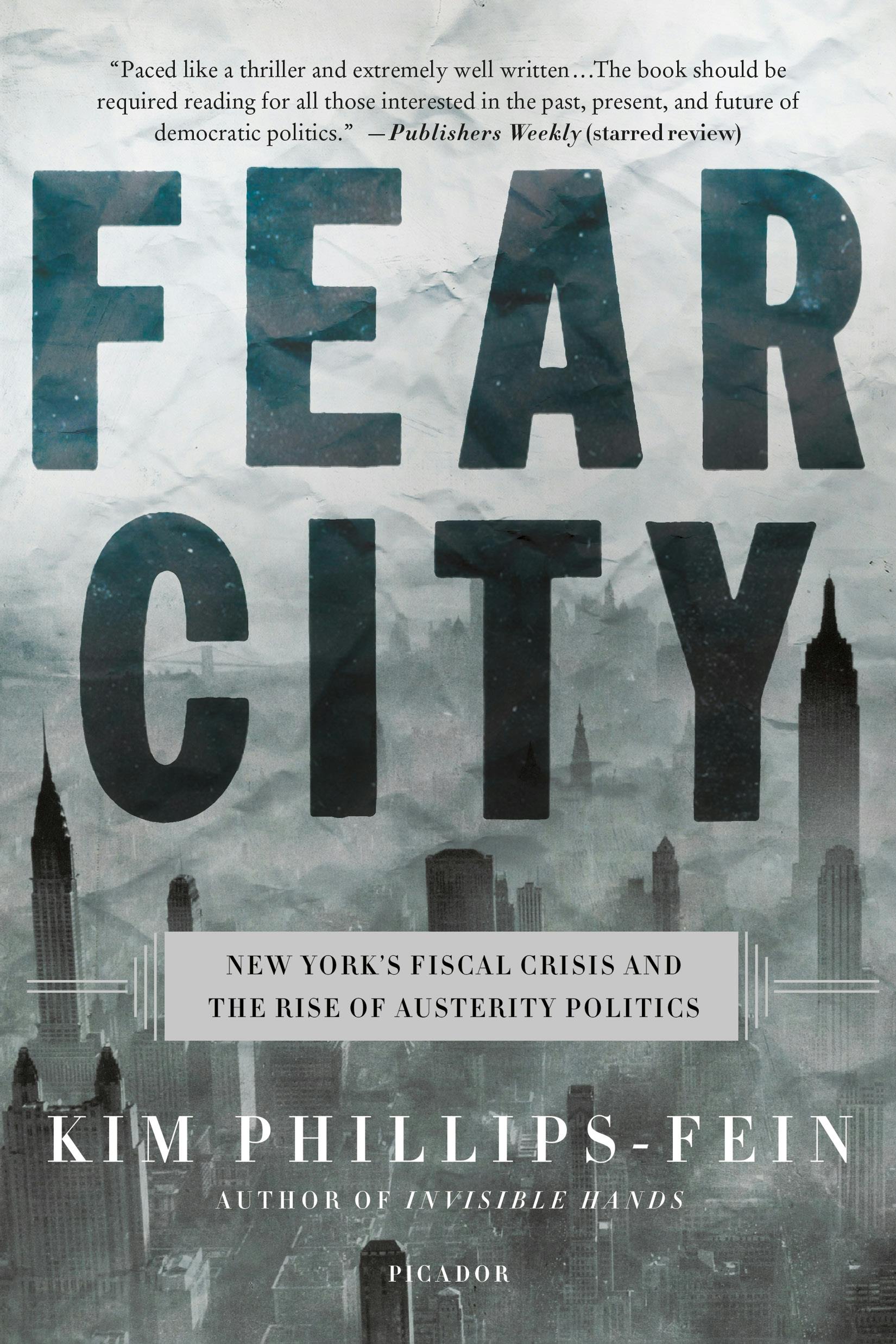By 1965, a $255 million gap had opened in the New York City budget. To cover the city’s operating expenses, Mayor Robert F. Wagner Jr. decided to “borrow now, repay later.” After all, he reasoned, “a good loan is better than a bad tax.” His successors, John Lindsay and Abraham Beame, made the same choice. Each mayor turned to short-term loans with the hope that additional tax revenues or federal aid would materialize. They did not. In the spring of 1975, the banks refused to purchase the next round of bond issuances, citing concerns that the city had exceeded its constitutional debt limit. The country’s largest metropolis teetered on the edge of default. Kim Phillips-Fein recounts these events and the social conflicts that followed in Fear City. The result is a magisterial account of the New York City fiscal crisis. Although critics would attribute the city’s fiscal woes to profligate spending, Phillips-Fein argues that the budget gap was the product of several interlocking structural processes. Deindustrialization steadily undercut the city’s economic foundation, as manufacturers shifted their operations to southern states and then abroad. Federal housing and highway policies siphoned middle-class white residents to the suburbs, depriving the city of their tax receipts. And while the federal government briefly injected additional resources during the War on Poverty, the Nixon and Ford administrations shrank the funding for those programs. City officials were left the stewards of a robust public sector that included tuition-free universities, municipal hospitals, and inexpensive subways, but it all rested upon a dwindling tax base. They plugged the gaps with loans upon loans until the day of reckoning eventually arrived.
Sophisticated in its methodology, Fear City tells the story of the ensuing crisis from multiple vantage points. The middle chapters focus on the negotiations over bond sales and the terms of a possible aid package from Washington. These meetings triggered a process of elite class formation that brought together investment bankers, corporate executives, and real estate magnates; the crisis “made these upper echelons look to each other.” As officials begged for their investment, these elites demanded layoffs, service cuts, and tax abatements in return. The last section shifts attention to the communities and institutions hardest hit by austerity and the activists who rallied in their defense. Weaving together multiple archives and toggling between scales, Fear City narrates the crisis from both above and below.

